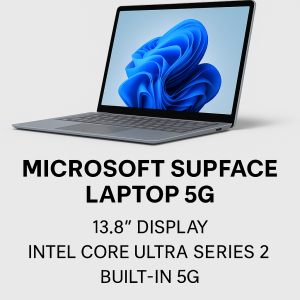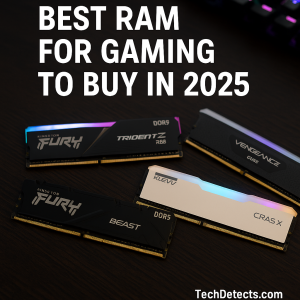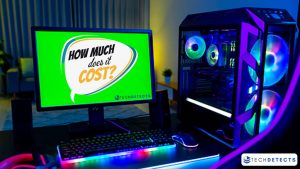Microsoft Surface Laptop 5G: AI Power Meets Always-On Connectivity
The Surface Laptop 5G is Microsoft’s boldest step yet toward redefining mobile productivity. Officially announced with a release date of August 26, 2025, and a starting price of $1,799, this 13.8-inch ultrathin notebook merges Intel’s new Core Ultra Series 2 processors with integrated 5G support via both eSIM and nano-SIM. But it’s not just about connectivity—this machine is a flagbearer for the AI-PC era.

Key Specs & Features
- Display: 13.8” PixelSense Flow touchscreen, 120Hz refresh rate
- Processor: Intel Core Ultra Series 2 with dedicated NPU for AI workloads
- Connectivity: Built-in 5G (eSIM + nano-SIM), Wi-Fi 7
- Battery Life: Up to 19 hours on typical use
- Memory & Storage: Up to 32GB RAM, 1TB SSD
- Ports: 2x USB-C, Surface Connect, 3.5mm headphone jack
- Weight: Approx. 2.96 lbs (1.34 kg)
Pros
- Seamless 5G makes it a true go-anywhere device
- Ultra-responsive AI performance for tasks like transcription, image generation, and real-time editing
- High-quality display with 120Hz smoothness
- Strong battery life despite cellular connectivity
Cons
- Premium price may limit appeal beyond business users
- Limited ports for pros needing more I/O
- No discrete GPU, not suitable for intensive graphics or gaming
Deep Dive: AI Features That Matter
What sets the Surface Laptop 5G apart is its real-world AI capabilities. With Intel’s integrated NPU, users can leverage features like background noise reduction in calls, real-time transcription, and auto-enhanced lighting in video meetings—all on-device, with no need for cloud processing. This boosts speed, enhances privacy, and ensures smoother multitasking, especially with tools like Microsoft Copilot built directly into Windows 11.
In practice, it means less lag in Zoom calls, snappier editing in Microsoft 365 apps, and faster response times for everyday AI queries.
How It Compares
Against the MacBook Air M3, the Surface Laptop 5G trades Apple’s raw efficiency for always-on flexibility. While the M3 wins in sustained performance and ecosystem synergy, it lacks 5G and native AI enhancements like an NPU. Compared to Samsung’s Galaxy Book4 Pro, the Surface feels more refined for productivity-first users rather than multimedia enthusiasts.
Real-World Use Cases
- Travelers: Always-on connectivity removes reliance on hotel or airport Wi-Fi.
- Remote Professionals: Copilot integration and AI productivity tools support multitasking.
- Students: Lightweight with a strong battery and responsive keyboard—ideal for note-taking and cloud access.
If your workflow involves frequent movement, unpredictable networks, and a mix of web and local tasks, the Surface Laptop 5G stands out.
Microsoft’s AI-PC Strategy
This launch aligns tightly with Microsoft’s broader AI-PC strategy. They’re betting big on the idea that future PCs will be defined by real-time AI experiences. With Copilot embedded across Windows 11, Office apps, and now running efficiently thanks to Intel’s NPU, the Surface Laptop 5G is a blueprint for what Microsoft wants the future laptop to be: always connected, context-aware, and productivity-driven.
Who It’s For
The Surface Laptop 5G is clearly built for mobile professionals, hybrid workers, and early AI adopters. Its always-connected capability makes it ideal for journalists, consultants, and remote teams. Students and creatives who prioritize portability and cloud workflows may also find it a compelling option—as long as their needs don’t include gaming or heavy 3D rendering.
Release Date & Pricing
- Launch Date: August 26, 2025
- Starting Price: $1,799 (expected to vary based on configuration)
Verdict
Microsoft has delivered a forward-thinking machine with the Surface Laptop 5G. The built-in 5G and AI enhancements place it among the first true AI-PCs that feel ready for 2025. While the price is steep and port selection limited, the combination of speed, mobility, and intelligence make it a worthy option for those who value always-on productivity and want to get ahead of the AI curve.
In a market filled with copy-paste ultrabooks, this laptop feels like Microsoft’s clearest statement yet on where personal computing is headed. It’s not perfect—but it’s pioneering.






